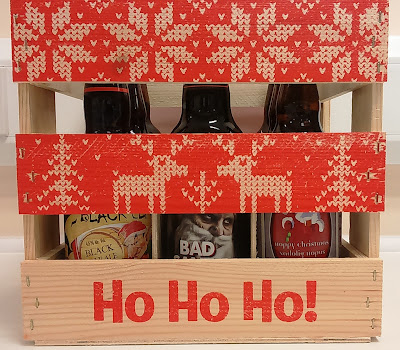If like me, you're an avid follower of Retired Martin, as he
chronicles his trips up and down the country in pursuit of yet another Good
Beer Guide "tick", you'll know what a prolific blogger he is.
Several posts ago, but probably less than a fortnight in
real time, Martin described his visit to Maidstone; a
town I know well, having lived there for five years during the early
1980's. Martin began his post with the
line, "I have to be careful what I say about Maidstone;
one of my top readers lives there (probably in the posh bit with a long
name)".
This sparked my curiosity, so I asked him which part of Maidstone
he considered the "posh bit", and what was its long name? "Boughton Monchelsea and the Farleighs", was
the reply, so I retorted that both places were villages in their own right, and
as far as I was concerned, neither were parts of Maidstone. I
finished by saying that I might be heading over that way the following week.
As it happened those words were no idle jest, as there was an
equipment supplier to the south of Maidstone that a colleague and I had planned
to visit, and the opportunity to do this came about at the beginning of the
week.
We were part-exchanging a rather essential piece of laboratory
equipment for a newer model, and seeing as Maidstone is only around 40 minutes
drive from our works, we decided to take the part-exchange item over ourselves,
and collect the new piece.
My colleague said he drive us, so we set off shortly before midday to conduct the exchange. We encountered
quite a few snow showers en route, but nothing too heavy. Although we had
visited this particular company before, their premises still took a bit of
finding. Fortunately Google Directions on my colleague's phone helped us
navigate there without too much effort.
The exchange carried out and the business concluded, we set
off back to work. Our outward route had taken us through West
Farleigh and Boughton Monchelsea; both places Martin had mentioned
in his post. I had pointed out a couple of pubs as we drove through these places,
so with lunchtime looming, we decided to stop off at one.
The pub in question was the Cock Inn, at Boughton
Monchelsea; an attractive former coaching inn, dating from the 16th Century,
and said to have been built to provide
lodgings for pilgrims on their way to Canterbury. It must have been over 30
years since I last set foot inside the Cock; probably when I was living in Maidstone.
Back then the pub belonged to Whitbread-Fremlins, but I distinctly
remember it being acquired by Young's. I was somewhat surprise then to see that
the Cock now belongs to Shepherd Neame. Despite the intense cold, the sun was shining
when we pulled into the car park, and the pub was looking particularly
good. I managed to take a few decent photos of the pub's exterior, before stepping
inside.
As my last visit had taken place three decades ago, there
was nothing inside the Cock which looked familiar. Instead my colleague and I
were confronted with a dimly lit jumble of a pub with lots of interlinked
areas, and the low, oak beamed ceiling one would expect of a building of this
age. The bar counter was over to the right, and I noticed there were three
Shep's beers on sale; Spitfire, Whitstable
Bay and Bishop's Finger (tempting,
as it's rarely seen on draught). There was also a guest ale in the form of
Black Sheep Best Bitter, and this was my choice (3.0 NBSS).
The friendly landlady suggested we warm ourselves in front
of the large inglenook fireplace. My
colleague grabbed himself a steak baguette, but as my sandwiches were waiting
for me back at work, I resisted. The sun was streaming in where we were sitting
at the front of the pub, which belied the cold wintry conditions outside. There
were several groups of diners, and I
noticed on my way to the toilets that there was a substantial restaurant area
at the rear of the building.
I took quite a few photos, after asking the landlady's
permission, of course. Even so, she asked me if I was an estate agent; as if?
Looking back at some of these now, it is quite obvious that the Cock is a “foodies”
pub. Not pretentious food,  but it is still a pub with a strong emphasis on
food. Drinkers though are still made welcome, and according to the write-up on
Whatpub, so are walkers and dogs.
but it is still a pub with a strong emphasis on
food. Drinkers though are still made welcome, and according to the write-up on
Whatpub, so are walkers and dogs.
 but it is still a pub with a strong emphasis on
food. Drinkers though are still made welcome, and according to the write-up on
Whatpub, so are walkers and dogs.
but it is still a pub with a strong emphasis on
food. Drinkers though are still made welcome, and according to the write-up on
Whatpub, so are walkers and dogs.
The Cock wouldn’t have been my first choice; that was the
Tickled Trout (formerly the Chequers), at West Farleigh, (but only because I wanted to see what it is like now).
As my colleague was doing the driving though, I let him decide, and in a
strange sort of way I was pleased that we called in where we did.












































